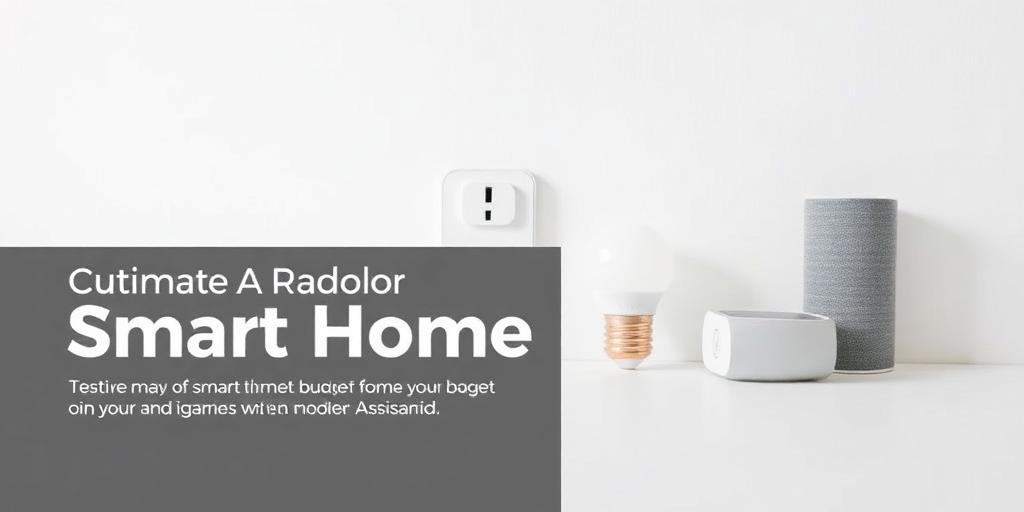Building a smart home doesn't have to break the bank. With a little planning and some smart choices, you can automate your home for under $200. This guide will walk you through the essentials, focusing on affordable devices and DIY solutions.
Step 1: Smart Plugs – The Gateway to Automation
Smart plugs are the easiest and most affordable way to start automating your home. These plugs allow you to control any device plugged into them remotely via your smartphone or voice assistant.
- Cost: $15-$25 per plug
- Recommendations:
- TP-Link Kasa Smart Plug Mini: Reliable and compatible with most voice assistants.
- Amazon Smart Plug: Seamless integration with Alexa.
- Use Cases:
- Lamps: Schedule your lamps to turn on at dusk and off at dawn.
- Coffee Maker: Set your coffee maker to start brewing before you wake up.
- Fans: Control fans in hard-to-reach places.
Step 2: Smart Lighting – Affordable Ambiance
Smart lighting adds convenience and ambiance to your home. While some smart bulbs can be expensive, there are budget-friendly options available.
- Cost: $10-$20 per bulb
- Recommendations:
- Wyze Bulb Color: Offers a wide range of colors and dimming options.
- LIFX Mini White: Simple, reliable, and easy to set up.
- Use Cases:
- Automated Schedules: Set your lights to automatically adjust throughout the day.
- Voice Control: Control your lights with voice commands.
- Mood Lighting: Create different lighting scenes for various activities.
Step 3: Voice Assistant – The Brain of Your Smart Home
A voice assistant is essential for controlling your smart devices hands-free. Fortunately, you can often find affordable options or even repurpose older devices.
- Cost: $30-$50 (or free if repurposing an old device)
- Recommendations:
- Amazon Echo Dot (3rd Gen): Often available at discounted prices.
- Google Home Mini (Nest Mini): Compact and affordable.
- Use Cases:
- Voice Control: Control all your smart devices with voice commands.
- Information Hub: Get weather updates, news, and more.
- Music Streaming: Play your favorite music through the device.
Step 4: DIY Security – Peace of Mind on a Budget
While a full-fledged security system can be costly, you can implement some basic security measures on a budget.
- Cost: $20-$40
- Recommendations:
- Wyze Cam v3: Affordable indoor/outdoor security camera with motion detection.
- Smart Door/Window Sensors: Detect when doors or windows are opened (requires a compatible hub).
- Use Cases:
- Remote Monitoring: Keep an eye on your home from anywhere.
- Motion Detection Alerts: Receive notifications when motion is detected.
- Entry Detection: Know when doors or windows are opened.
Step 5: Putting it All Together
Now that you have your smart devices, it's time to connect them and create a cohesive smart home experience.
- Download the Apps: Download the apps for each of your smart devices.
- Connect to Wi-Fi: Connect each device to your home Wi-Fi network.
- Integrate with Voice Assistant: Link your smart devices to your voice assistant for voice control.
- Create Routines: Set up routines to automate multiple actions with a single command.
Long-Tail Keyword Variations:
- Affordable Smart Home Automation
- DIY Smart Home on a Budget
- Cheap Smart Home Devices
Conclusion:
Building a smart home on a budget is entirely achievable. By focusing on affordable smart plugs, lighting, voice assistants, and DIY security solutions, you can transform your home into a smart haven without breaking the bank. Start small, experiment with different devices, and gradually expand your smart home ecosystem as your budget allows.









